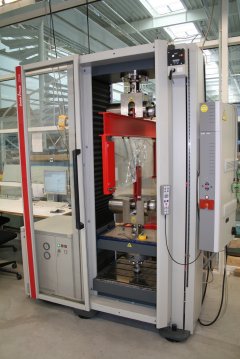The use of glass in modern architecture continues to gain in popularity, being the material of choice for an ever-increasing number of façades, bridges, roofs and stairs. Whether adhesives or steel structures are employed as the joining medium, these glass designs must conform to strict safety requirements. German manufacturer Zwick Roell supplies testing systems for this demanding field and provides solutions covering a wide range of industries, for individual customer projects and technologically challenging situations.

seele GmbH & Co. KG develop, design and build modern glass façades, roofs, stairs and bridges, together with high-quality aesthetic glass structures. The sophisticated structures of their designs set global standards in lightness and transparency, strength and precision, economy and ecology.
Increasingly exacting demands by clients and architects mean that the boundaries of technical feasibility are being encountered with increasing frequency. There are still very few standards relating to glass structures compared to those made of steel. It is often not possible to check glass structures by calculation, in which case destructive tests must be used to check and document structural theory. Zwick Roell testing systems offer manufacturers access to a proven, modular system (testing machine/software), often eliminating the need for cost-intensive structural calculations.
When it comes to suppliers, seele's preference is for 'Made in Germany', making Zwick testing systems, with their capacity to meet demanding testing requirements with tailor-made solutions, a natural choice for in-house testing of designs and joints."The versatility of the testing machine with regard to differing applications, together with the flexible, user-friendly testXpert software make it easier for me to achieve my daily objectives," says Horst Erhard (Dipl.-Ing.), a development engineer at seele GmbH & Co. KG. Zwick machines are used by seele for a variety of tests, including double-ring flexure tests, pull-out tests, compression tests and tensile tests on a hole bored in glass (illustrated). Various modifications can be applied to the testing system, which adapts to individual requirements while guaranteeing high quality and reliability.